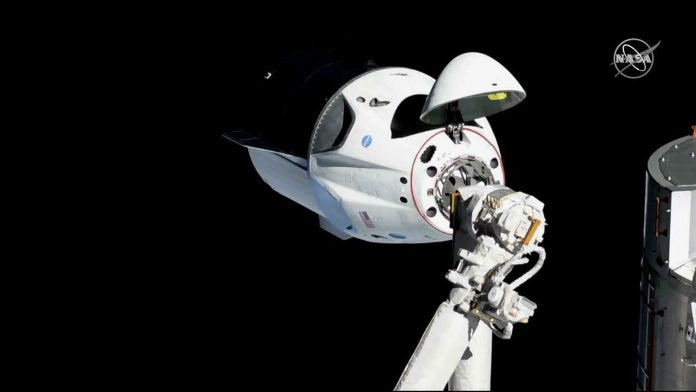Space X, a creation of the enigmatic Elon Musk completed the triumphant docking of its Dragon Vehicle onto the International Space Center as it orbited around 250 miles above the earth. This successful mission is the last step before NASA gives its final approval to eventually transport people to space, which might happen as soon as July. Carrying a smart dummy named Riley and around 200 pounds of cargo, the Dragon will stay at I.S.S before it attempts re-entry, which is considered to be tricky.
Before the launch of Dragon, a full day of reviews was done to determine if the vehicle was ready to see space and travel to the International Space Station. This flight, called Demonstration Mission-1, or DM-1, is a major milestone for NASA’s Commercial Crew Program which is an enterprise to send astronauts to the I.S.S aboard private vehicles. NASA wanted both rival companies, SpaceX and Boeing to send both their vehicles empty to space, before putting people on board. While Boeing’s vehicle, the CST-100 Starliner, is set to fly unscrewed this April, SpaceX’S Crew Dragon has been ready since December, purely awaiting NASA’s approval which it finally got.
The Launch
Straddled on top of one of SpaceX’s Falcon 9 rockets, the Crew Dragon soared into space at 2: 49 AM ET from Cape Canaveral, Florida and deployed into the orbit, 11 minutes later. After takeoff, SpaceX then landed its Falcon 9 on one of the company’s drone ships in the Atlantic, making it the company’s 35th successful landing overall. It’s almost like a look into the future when the capsule will someday carry astronauts into the orbiting lab and NASA cannot wait to see the vehicles in action.
Ripley
Equipped with multiple sensors, Ripley the smart dummy wore a custom SpaceX suits as he rode inside the capsule. It gathers data about how the flight might affect a human body while SpaceX live stream provides views of Ripley from inside the capsule and from the mannequin’s perspective during the launch. Accompanying Ripley is a cute soft toy of planet Earth that floats inside the capsule to signal microgravity.
The Landing
The Crew Dragon with Ripley on board met up with the ISS early on Sunday. As soon as it reached the orbit, the tip of the gumdrop-shaped capsule rotated open and exposed the capsule’s docking mechanism below it which is something it would have to continue to do in the future. As the capsule maneuvered itself toward the station and attached itself to an available port using lasers and software, also known as the International Docking Adapter. It is a kind of a parking spot for both of SpaceX and Boeing’s incoming capsules. Compared to its predecessor, the Dragon Capsule, it needs no input from the crew on board. The Docking marked the second major step in transporting astronauts to space from US Soil.
Since it is the first launch of this particular vehicle, NASA expects some risks and lessons to be learned from the flight. According to SpaceX, it has done 17 tests on the parachute systems so far but NASA is yet in the process of attesting the hardware for future crewed missions.
This is a new process for SpaceX, which has never automatically docked a vehicle to the space station before as opposed to the earlier ones that had to be manually berthed by a crew member.
The Welcoming Ceremony
A few hours after the Crew Dragon landed, the hatch will be opened and the station crew- NASA astronaut Anne McClain, Canadian astronaut David Saint-Jacques, and Russia cosmonaut Oleg Kononenko would venture inside the Dragon to greet Ripley as they retrieve the cargo. Various tests will be performed to see the stability of the Crew Dragon in the space environment and to see how it is holding up.
The Crew Dragon will be there for a short time before it is loaded up again with cargo for its return to Earth. Despite its short stay, representatives of NASA will insist that these tests will be taken very seriously. “It’s a test flight, but it’s more than a test flight,” Bill Gerstenmaier, the associate administrator for NASA’s human spaceflight program, said during a press conference.
What’s Next?
Bound to undock from the I.S.S on early Friday morning, the Crew Dragon will take the plunge towards Earth. A network of parachutes will deploy to slow down the capsule during its descent towards Earth, allowing it to fall safely into the Atlantic Ocean as it would wait to be retrieved by a SpaceX recovery vehicle and taken back to shore.
With the completion of the most important phase of the Crew Dragon, a new era is waiting to be experienced that might send humans into space, transforming the face of Science as we know it.



























